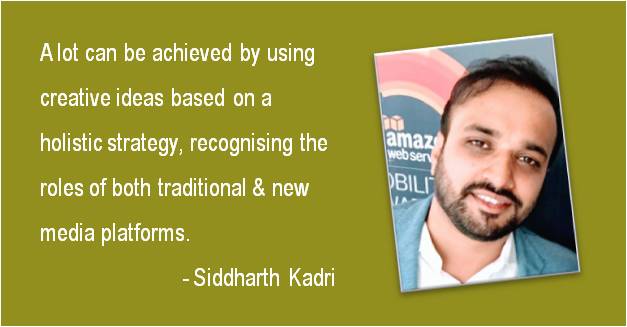It is said that the lines between marketing and public relations are blurring. New media technology has brought about this shift and brands are looking at communications with a holistic approach instead of silos.
Although communications has been analysed from different perspectives be it Facebook Insights, Google analytics, TRP or AVE for media coverage, legitimacy theory seems to be missing across these calculations. Brands continue to have separate teams who work on separate marketing and communications functions thus diluting the effectiveness of the key message.
A lot can be achieved by using creative ideas based on a holistic strategy; it should predominantly recognise the roles of both traditional media and new media platforms as effective mediums to position brands among the key stakeholders.
To give you an example of how holistic communications aids brand building lets look at a case:
While working with a Rajasthan-based celebrity, the challenge our team faced was that the fan base was scattered across platforms and not all of them were tech savvy. We had to reach out to an audience comprising of youth, bike enthusiasts, aspiring entrepreneurs, philanthropists, artists, budding politicians & aspiring leaders who were not only present on platforms like LinkedIn, Facebook, Instagram, Twitter but also to those who only have access to television and newspapers.
To address this task at hand we created content buckets that spoke about his achievements in the travel and tourism space, the awards and accolades that he won and even spoke about his views on culture and heritage. To add to this from time to time we encouraged him to share messages with a personal touch.
What worked for us was a holistic communications strategy which involved a mix of online and offline dissemination of messages. Be it Facebook live or an article in Huffington Post or views on local issues in Rajasthan Patrika, we did it all.
This holistic approach helped build thought leadership and bring about uniformity in the messages that were being disseminated across platforms. Having said that I would like to conclude by saying “What we are” communicates better than “What I am” (Dr. Stephen R Covey). And if brands want to set out and achieve this, they have to bring in practices of holistic communications or perish.



Scholarly and succinct. Liked it very much.